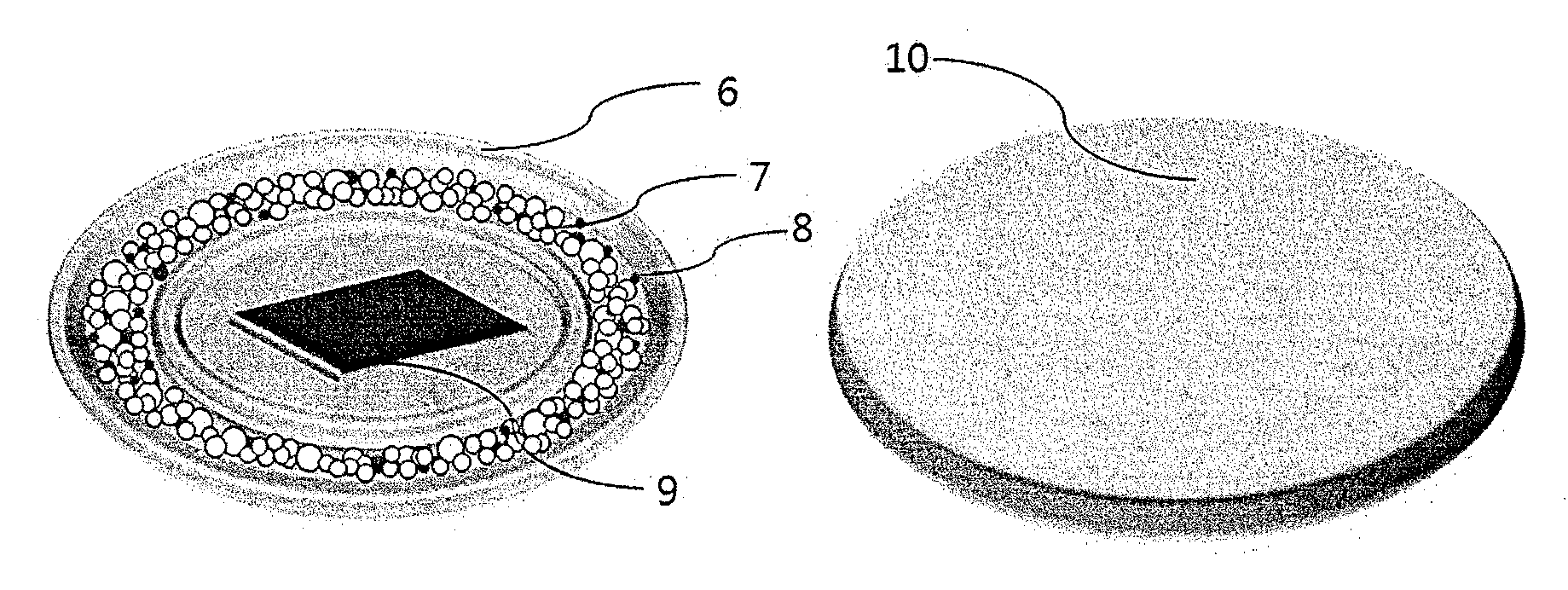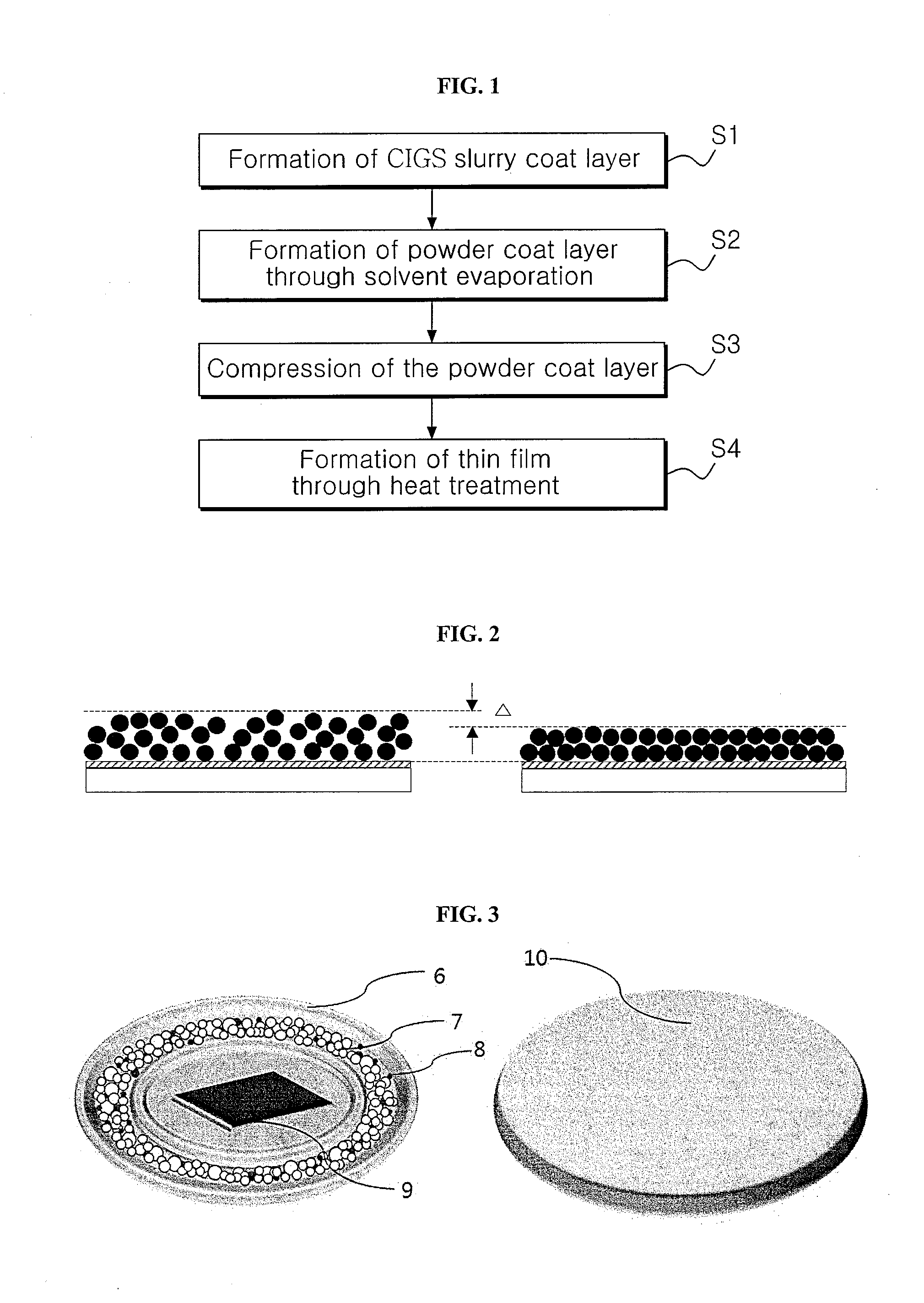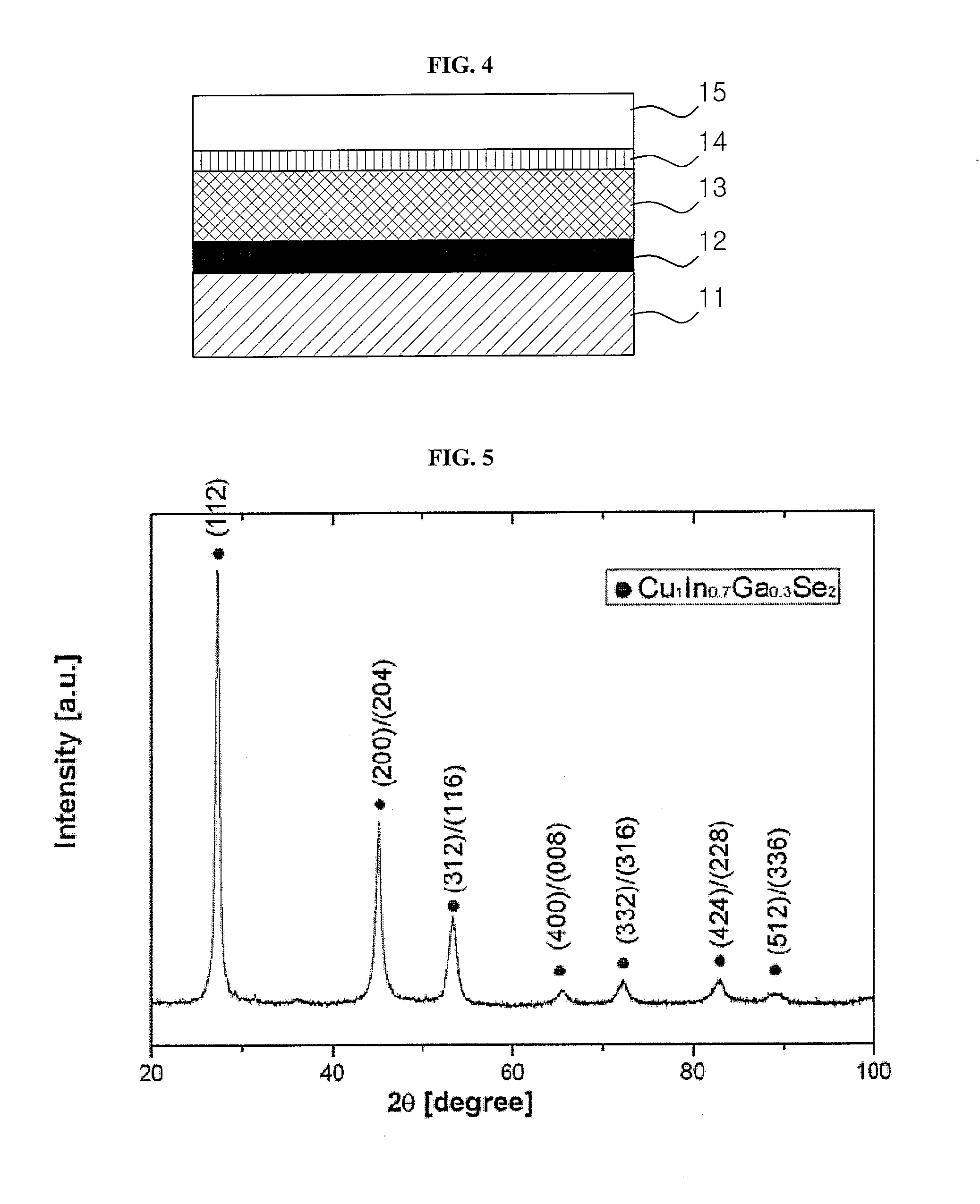Method for producing thin-film light-absorbing layer and method for manufacturing thin-film solar cell including the same
a solar cell and light-absorbing layer technology, applied in the field of producing thin-film light-absorbing layer and manufacturing thin-film solar cells including the same, can solve the problems of high manufacturing cost, long processing time, and high photoelectric conversion efficiency of silicon solar cells, and achieve high photoelectric conversion efficiency and cost reduction
- Summary
- Abstract
- Description
- Claims
- Application Information
AI Technical Summary
Benefits of technology
Problems solved by technology
Method used
Image
Examples
example 1
[0088]1) Preparation of CIGS Compound Powder
[0089]A copper metal powder (Cu purity 99.9%, average diameter 140 μm), an indium metal powder (In purity 99.99%, average diameter 140 μm), a gallium metal powder (Ga purity 99.99%, liquid at room temperature) and a selenium powder (Se purity 99.99%, average diameter 140 μm) as raw materials were mixed to compose CuInxGa1-xSey (x=0.7, y=2). The mixture was placed in a stainless steel jar filled with zirconia balls and dry milled in a planetary milling machine at 200 rpm for 30 min. X-ray diffraction and scanning electron microscopy (SEM) analysis indicated that the mixture had a single phase of the composition CuInxGa1-xSey (x=0.7, y=2) and was polydispersed in size having an average diameter of 30 to 850 nm. The diffraction results are shown in FIG. 5 and a SEM image of the mixture is shown in FIG. 6.
[0090]2) Preparation of the Powder Slurry
[0091]Pentanol (95.5 wt %), ethyl cellulose (3.0 wt %) and a powder dispersant (KD-2) (1.5 wt %) we...
example 2
[0100]A thin film was produced in the same manner as in Example 1 from step 1) to 4), but step 5) for thin-film formation follows the method explained in Example 2 instead.
[0101]The alumina powder (Al2O3 purity 99.8%, average particle size 75 μm), heat treated at 250° C. for 1 hr, was mixed with a selenium powder (Se purity 99.99%, average diameter 140 μm) in a weight ratio of 4:1. For homogeneous mixing of the selenium and alumina powders, the powder mixture was ball-milled in a 250 ml Nalgene bottle filled with 5-mm zirconia balls at 140 rpm for 2 hr. During the ball milling, the atmosphere was charged with argon to protect the powder mixture from air oxidation. The selenium powder may be in different size after the ball milling.
[0102]As illustrated in FIG. 3, the substrate 9, on which the CIGS powder layer with improved packing density is formed, was placed in an alumina crucible 6, and then 0.5 g of the ball-milled powder mixture of alumina 7 and selenium 8 was placed around the...
experimental example 1
Comparison of Electrical Properties
[0105]The electrical properties of the thin film produced by selenization after compression in Example 2 were compared with those of the thin film produced by selenization without compression in Comparative Example 2. The electrical properties of a thin film have a direct influence on the efficiency of a thin-film solar cell. That is, high electron mobility and electrical conductivity of a thin film may lead to high efficiency of a solar cell. The electrical properties of the thin films produced in Example 2 and Comparative Example 2 were measured using a Hall effect measurement system (Ecopia HMS3000) at a magnetic field of 0.57 T by the Van der Pauw method. A 4-point probe method was used to analyze the CIGS thin films deposited on the glass substrates.
TABLE 1BulkMobilityConductivityconcentrationμResistivityσp (cm−3)(cm2 / Vs)p (Ω· cm)(1 / Ω· cm)(a) Example 28.6 × 10167.21.00.10(b) Comparative9.2 × 10160.641060.0094Example 2(c) Example 11.4 × 10170.4...
PUM
| Property | Measurement | Unit |
|---|---|---|
| pressure | aaaaa | aaaaa |
| band gap energy | aaaaa | aaaaa |
| thickness | aaaaa | aaaaa |
Abstract
Description
Claims
Application Information
 Login to View More
Login to View More - R&D
- Intellectual Property
- Life Sciences
- Materials
- Tech Scout
- Unparalleled Data Quality
- Higher Quality Content
- 60% Fewer Hallucinations
Browse by: Latest US Patents, China's latest patents, Technical Efficacy Thesaurus, Application Domain, Technology Topic, Popular Technical Reports.
© 2025 PatSnap. All rights reserved.Legal|Privacy policy|Modern Slavery Act Transparency Statement|Sitemap|About US| Contact US: help@patsnap.com



